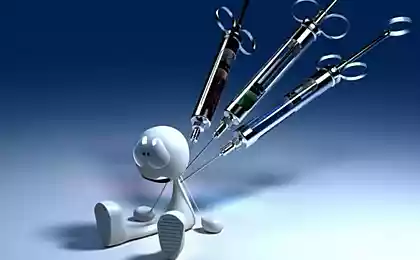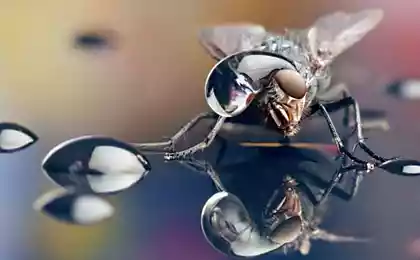459
The new study is a surprising similarity between the way mammals and flies eat
Portuguese scientists together with researchers at Washington University studied the dietary habits of fruit flies using sensor technologies.
Principal investigator Carlos Ribeiro: "the Fruit fly is a highly valuable animal model, but they are very small, therefore, to observe the small details of their behavior, for example, how they eat it was difficult." Therefore, the researchers decided to use the touch screen to detect touch. Ribeiro explains: "the Technique is based on the same technology as in IPADS. Every time a fly touches food, we can detect it, allowing us to explore the details of feeding in high resolution and real time."

Biologists found that the flies eat, rhythmically extending their proboscis. When they are hungry, they do not change the feeding rhythm, but change the time to take the next bite. This means that flies change different aspects of their behavior depending on how they are hungry. Furthermore, the method of adaptation of flies to starvation is similar to how mammals do it.
Also, scientists have developed a method for determining the time of getting food into the nervous system. Co-author Pavel Itskov said: "We decided to use the light. "We took a protein from fireflies and put it in the brain of Drosophila. Then we fed them with a substance that activates the protein. Thus, we can see that flash in the brain associated with food intake and kinetics of absorption of nutrients. It turned out, the food enters the nervous system of a fly is very fast, in just 20 seconds."
Scientists plan to continue experiments. Ribeiro: "the Next step is to use these methods to understand how the brain regulates food intake. We will look for neurons and genes that control power in flight. Given that the regulation of this behaviour seems to be similar in flies and vertebrates, there is a fascinating possibility that it is controlled by similar neural circuits and genes. This work will bring us closer to understanding how we choose what and how much to eat".
Source: nauka24news.ru/
Principal investigator Carlos Ribeiro: "the Fruit fly is a highly valuable animal model, but they are very small, therefore, to observe the small details of their behavior, for example, how they eat it was difficult." Therefore, the researchers decided to use the touch screen to detect touch. Ribeiro explains: "the Technique is based on the same technology as in IPADS. Every time a fly touches food, we can detect it, allowing us to explore the details of feeding in high resolution and real time."

Biologists found that the flies eat, rhythmically extending their proboscis. When they are hungry, they do not change the feeding rhythm, but change the time to take the next bite. This means that flies change different aspects of their behavior depending on how they are hungry. Furthermore, the method of adaptation of flies to starvation is similar to how mammals do it.
Also, scientists have developed a method for determining the time of getting food into the nervous system. Co-author Pavel Itskov said: "We decided to use the light. "We took a protein from fireflies and put it in the brain of Drosophila. Then we fed them with a substance that activates the protein. Thus, we can see that flash in the brain associated with food intake and kinetics of absorption of nutrients. It turned out, the food enters the nervous system of a fly is very fast, in just 20 seconds."
Scientists plan to continue experiments. Ribeiro: "the Next step is to use these methods to understand how the brain regulates food intake. We will look for neurons and genes that control power in flight. Given that the regulation of this behaviour seems to be similar in flies and vertebrates, there is a fascinating possibility that it is controlled by similar neural circuits and genes. This work will bring us closer to understanding how we choose what and how much to eat".
Source: nauka24news.ru/























